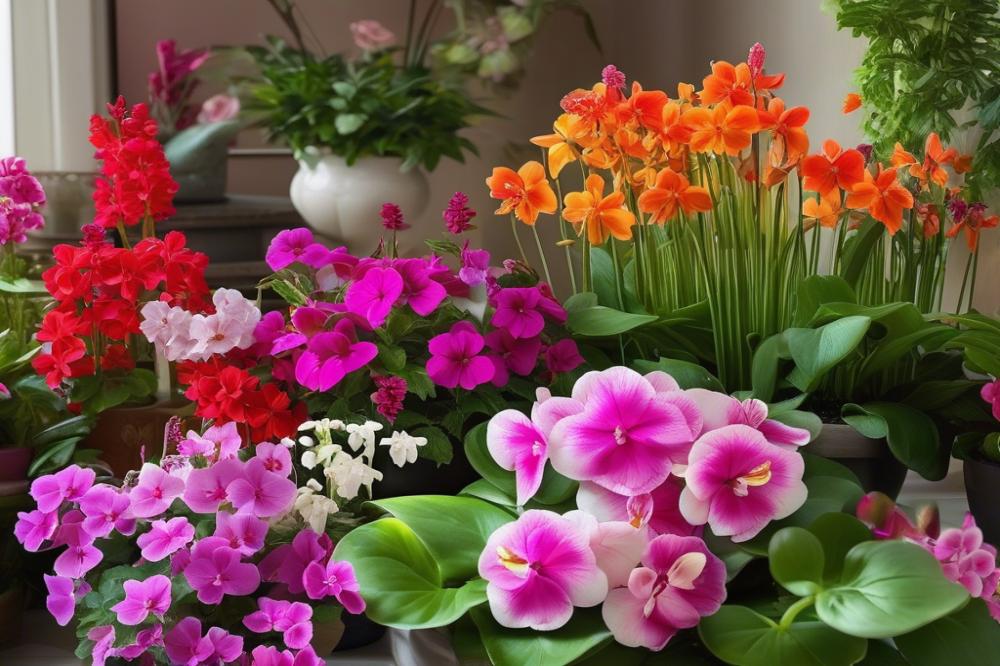wilting roses: Understanding the Issue
Roses have captured hearts for centuries with their beauty and fragrance. However, when these cherished blooms begin to wilt, it can be disheartening. A wilting rose signifies underlying problems that often affect the overall health and appearance of your plants. Many gardeners encounter this issue, making it a common concern in rose care.
Identifying the causes of wilting is essential for successful cultivation. Issues can range from watering problems to soil conditions. Inadequate watering may leave roses thirsty while overwatering can lead to root rot. These situations demand prompt attention. Disease can also steal vitality, with various rose diseases lurking to attack plants when they are weak.
Pests pose another threat. Insects can sap the life from roses, causing stress that leads to wilting. Sunlight requirements vary, too. Roses must receive the right amount of light to thrive. Without adequate sunlight, even the strongest plants start to droop. Thus, you’ll find that the environment plays a key role in maintaining healthy roses.
Additionally, proper pruning techniques ensure that bushes remain vigorous. Without regular trimming, plants can become overgrown, affecting air circulation and increasing vulnerability. Fertilization is equally important; nutrients are essential for overall health. By addressing these factors, you promote wilting prevention and encourage vibrant blooms to flourish.
Ultimately, understanding why your roses are wilting is crucial for effective gardening. By recognizing the warning signs and taking timely action, you can restore their beauty and health. This journey demands attention, but with dedication, your roses can be a splendid addition to any garden.
Understanding wilting roses

Wilting roses are a clear sign that something is wrong with your beloved plants. When roses begin to droop, their vibrant petals lose their firmness and may even appear faded or limp. Leaves can curl and turn yellow, adding to the stark visual indication of distress. This sad state of the plant is not just an aesthetic issue; it can significantly affect the overall health and blooming potential of the roses.
Once a rose starts wilting, it often indicates deeper problems. Watering issues, such as underwatering or overwatering, commonly lead to wilting. Overly saturated soil can result in root rot, while dry conditions stress the plant. Soil conditions play a crucial role in supporting healthy growth. If the soil is compacted or lacks nutrients, your roses may struggle to thrive.
Diseases can also contribute to wilting. Fungi and bacteria can invade weak plants, leading to further deterioration. Proper pest control is necessary to combat any infestations that might sap the plant’s strength. Monitoring for common pests, such as aphids or spider mites, is a vital step in safeguarding your roses.
Sunlight requirements must be met for robust roses. Insufficient light might weaken the plant, making it vulnerable to wilting. Likewise, ensure the roses are in a suitable environment. Environmental stressors like extreme temperatures or sudden climate changes can disrupt their growth cycle.
Pruning techniques can create airflow and improve health. Removing dead or unhealthy branches can allow the plant to redirect its energy toward new growth. Fertilization, when applied properly, nourishes the roses and can prevent issues that lead to wilting.
Ultimately, understanding the signs of distress is key. Regular care, attention to specific needs, and a proactive approach to potential problems will help maintain vibrant roses. With the right strategies in place, wilting can often be prevented, ensuring those gorgeous blooms remain lively and healthy.
Common Causes of Wilting Roses

Roses might wilt for several reasons, often stemming from care missteps. A key culprit for many gardeners is water issues. Overwatering can drown roots, leading to a lack of oxygen. On the other hand, underwatering makes roses unable to absorb nutrients. Striking the right balance in watering is crucial for maintaining vibrant blooms.
Soil conditions play a significant role in the health of any plant, including roses. Poor drainage can lead to standing water, which is harmful. Ideal soil should allow excess water to flow away smoothly. pH levels should also be monitored; roses flourish best in slightly acidic to neutral soils. Nutrient composition must be adequate to support growth and flowering, so check for deficiencies regularly.
One alarming issue that can cause wilting is root rot. This condition arises from fungal infections that thrive in overly wet soils. Roots become mushy and die back, making it impossible for the plant to take up water. Preventing this involves ensuring that water doesn’t accumulate around the roots.
Environmental stress can wreak havoc on roses, too. Temperature extremes—whether too hot or too cold—can shock a plant’s system. Windy conditions can physically damage plants, while high humidity levels might attract pests and diseases that further complicate care. Understanding these environmental factors helps in crafting a robust care routine.
Another aspect to consider is effective pruning techniques. Regular pruning encourages new growth and removes dead or diseased wood. Pests, when left unchecked, may lead to additional stress on plants. Implementing pest control measures is vital for safeguarding roses. Sunlight requirements also matter; roses need several hours of sun each day for optimal growth.
Fertilization provides necessary nutrients. Balanced fertilizer helps promote healthy growth. Each of these factors contributes to overall plant health. Keeping roses happy is achievable with the right knowledge and care practices.
Identifying and Treating rose diseases

Rose diseases are a common challenge for gardeners. They can cause significant issues that lead to wilting and poor health. Two of the most prevalent diseases are black spot and powdery mildew. Recognizing these diseases is crucial for effective treatment.
Black Spot
Black spot appears as dark, circular spots on the leaves. This fungal disease thrives in humid conditions. As the spots grow, leaves may turn yellow and drop prematurely. If left unchecked, the rose plant can weaken, affecting its overall vigor.
In order to combat black spot, consider the following measures. Start by ensuring proper air circulation around the plants. Good airflow helps reduce humidity, making it less favorable for the fungus. Pruning techniques also play a key role. Remove any infected leaves promptly to prevent the disease from spreading.
Powdery Mildew
Another common issue is powdery mildew, which appears as a white, powdery substance on the leaves. It tends to thrive in warm, dry environments. Symptoms include stunted growth and distorted leaves. This disease can cause severe stress to the plant if not treated swiftly.
Watering issues can contribute to this problem. Avoid splashing water on the foliage to minimize moisture on the leaves. Instead, apply water directly to the soil. Organic fungicides can also prove effective. Using them at the first signs of mildew can help manage the outbreak.
Prevention Strategies
Preventing rose diseases requires attention to several factors. Keep soil conditions optimal by ensuring proper drainage. Overwatering can lead to root rot. This condition not only stresses the plant but also makes it more susceptible to diseases.
Monitoring sunlight requirements is essential. Roses typically need at least six hours of sunlight a day. Poor lighting can weaken the plants, making them vulnerable to disease. Likewise, consider fertilization carefully. Healthy, well-fed roses are better equipped to resist diseases.
In addition to these strategies, practicing good pest control is vital. Insect infestations can exacerbate disease issues. Regular inspections and prompt action can make a significant difference. Finally, keep an eye on your environment. Stress from extreme temperatures or sudden changes can lead to wilting, making roses more prone to problems.
Effective Watering Practices and Fertilization

Proper watering techniques play a vital role in preventing wilting in roses. Watering too little can dry out the soil, while overwatering may lead to root rot. Finding a balance is key to keeping your roses thriving.
Consider the frequency of watering. Generally, roses need about an inch of water per week. If rainfall is sparse, aim to water once or twice a week, depending on your soil conditions. Check the top inch of soil; if it feels dry, it’s time to water.
The amount of water matters as well. When you do water, provide enough so that it penetrates the root zone. This encourages deeper root growth. Deep roots help roses absorb more nutrients and moisture, empowering them to withstand environmental stress better.
Now let’s talk about fertilization. The right nutrients can significantly support healthy growth. Start with a balanced fertilizer designed for roses. This should be applied during the growing season, usually in the spring and possibly again in mid-summer. Good fertilizers often have the right balance of nitrogen, phosphorus, and potassium.
Pruning techniques can also influence how well roses utilize water and nutrients. Removing dead or diseased canes encourages better air circulation and sunlight exposure. Healthy plants are less susceptible to rose diseases and can adapt to changes in watering and fertilization more effectively.
Don’t forget about pest control. Pests can stress your roses and make them more vulnerable to wilting. Monitor plants regularly and take action against any infestations.
Lastly, sunlight requirements cannot be overlooked. Roses thrive in full sun, typically needing around six hours of sunlight each day. The right amount of light also helps them process the water and nutrients better. By addressing watering issues, adjusting your fertilization strategy, and monitoring the health of your plants, you can promote the robust growth of your roses and prevent wilting.
Pruning Techniques for Healthy Roses
Proper pruning is essential for maintaining healthy roses. When you prune correctly, air can circulate freely. This helps to prevent the buildup of moisture that can lead to rose diseases. Additionally, light exposure improves, allowing your plants to thrive. A good balance of sunlight enhances growth and reduces stress in the environment.
Timing is crucial when it comes to pruning techniques. Late winter or early spring is ideal. This ensures that your roses are just waking up from dormancy. Look for dead or damaged stems as your first targets. Removing these not only improves the plant’s appearance but also reduces the risk of pests causing harm.
Don’t forget about shaping your bushes. Aim for a vase-like structure with an open center. This design promotes airflow and lets sunlight in, which is vital for healthy blooms. As you prune, cut at an angle. This helps water run off, reducing the chances of root rot and other soil issues.
Be mindful of your tools as well. Always use sharp, clean pruning shears. Dull blades can crush stems, leading to further injury. Clean tools prevent the spread of diseases and pests, so take a moment to sterilize them before getting started.
After pruning, consider fertilization to help your roses recover. A balanced fertilizer gives plants the nutrients they need to bounce back. Pay attention to watering issues after pruning; do not overwater, as this can put stress on your plants.
Understanding your roses’ sunlight requirements is also important. Different varieties have unique needs. Observe how much sunlight your garden gets throughout the day and prune accordingly. Tailoring your approach can help with wilting prevention.
Pest Control and Sunlight Requirements
Roses are beautiful, but they can also be sensitive. Pests are often a major issue for these plants. Common invaders include aphids, spider mites, and whiteflies. Each of these can lead to wilting. Their presence can weaken your plants and hinder growth. Aphids suck out essential juices, while spider mites create fine webs that suffocate new leaves.
Many ways exist to manage these pests. Insecticidal soap is a safe and effective option. Spraying this solution on infested areas can eliminate many unwanted guests. Neem oil is another natural remedy that disrupts the life cycles of pests. Sometimes, introducing beneficial insects like ladybugs can help. These ladybugs will feast on aphids and other pests, reducing their numbers naturally.
Sunlight plays a critical role in rose health as well. Most roses thrive in full sun, which means they need at least six hours of direct light each day. If weak growth appears or your roses start wilting, check their sunlight exposure. Too much shade can lead to various rose diseases, including powdery mildew. To assess if your roses are receiving enough light, observe the surrounding plants. If taller plants block the sun’s rays, consider relocating your roses to a sunnier spot.
Maintaining proper soil conditions also helps prevent problems. Poor soil can stress plants and lead to wilting. Make sure your soil drains well; standing water can cause root rot. Overwatering is a common issue, and monitoring watering practices is essential. Healthy watering strategies promote strong root systems, ensuring better toleration of environmental stress.
Pruning techniques can also support rose growth. Trim off dead or diseased material to encourage new growth. This will help the plant focus its energy on healthy parts. Additionally, regular fertilization supplies vital nutrients. Roses benefit from balanced fertilizers that promote vigorous blooms and resilience against pests.
With attention to these factors, you can maintain healthy, vibrant roses. Active pest control and ensuring adequate sunlight will go a long way. Gardeners can enjoy the beauty of their plants without the worry of wilting.
Wilting Prevention Strategies
Taking steps to prevent wilting in roses starts with regular monitoring. It is important to observe your plants frequently. Pay attention to changes in color and texture. Look for signs of stress like drooping leaves or discolored petals. Early detection of problems allows for prompt action.
Maintaining soil health is crucial. Quality soil provides essential nutrients for roses. Amend the soil with organic matter to improve its structure. Good drainage prevents root rot, which can devastate your plants. Check pH levels regularly to ensure they remain suitable for roses.
Watering issues often lead to wilting. Both overwatering and underwatering can be harmful. It’s vital to strike a balance. Deep watering encourages strong root systems, but it should be done less frequently. Consider using mulch to retain moisture while regulating soil temperature.
Pruning techniques play a role in plant health as well. It is advisable to remove dead or dying stems. Regular pruning promotes air circulation and sunlight penetration, reducing the likelihood of rose diseases. Proper spacing between plants also helps to minimize fungal issues.
Pest control is another key factor in preventing wilting. Regular inspections for pests such as aphids or spider mites are essential. If detected, take action quickly to minimize damage. Utilizing beneficial insects can be an organic solution for pest problems.
Sunlight requirements must be understood for healthy growth. Most roses thrive with at least six hours of direct sun daily. Providing the right amount of light can prevent stress and enhance blooming. If your roses are shaded by other plants, consider relocating them.
Fertilization should also be approached with care. Use a balanced fertilizer specifically formulated for roses. Timing matters; apply during the growing season to boost their vitality. Too much fertilizer can lead to nutrient burn, so always follow package instructions.
Creating a supportive environment cannot be overlooked. Climate impacts plant resilience significantly. Protect your roses from extreme weather conditions, such as strong winds or heavy rain. Shade cloths can provide relief during blistering heat.
Understanding these challenges will help you maintain healthy roses. With attention and care, they will thrive and beautify your garden, free from wilting woes.
Final Thoughts on Reviving Your Roses
Identifying the reasons behind your roses struggling can be the first step towards revitalizing them. Common issues such as improper watering, poor soil quality, pests, and rose diseases contribute to the problem. Understanding these factors is essential to successful gardening. Solutions discussed, including adjusting your watering schedule, choosing nutrient-rich soil, and addressing pest infestations, can significantly improve your plants’ health.
Consider implementing these practices in your garden. It may take some time, but taking action and being vigilant pays off. Regularly check your roses for any signs of trouble. This proactive approach includes wilting prevention methods, which can keep your bushes thriving. With a little care and attention, you can turn struggling plants into vibrant blooms.
Nurturing your roses can be a rewarding experience. By carefully considering the issues that lead to wilting, you’re on the path to developing a flourishing garden. So gear up, grab your gardening tools, and dive into the possibilities that await your rose bushes. Happy gardening!



